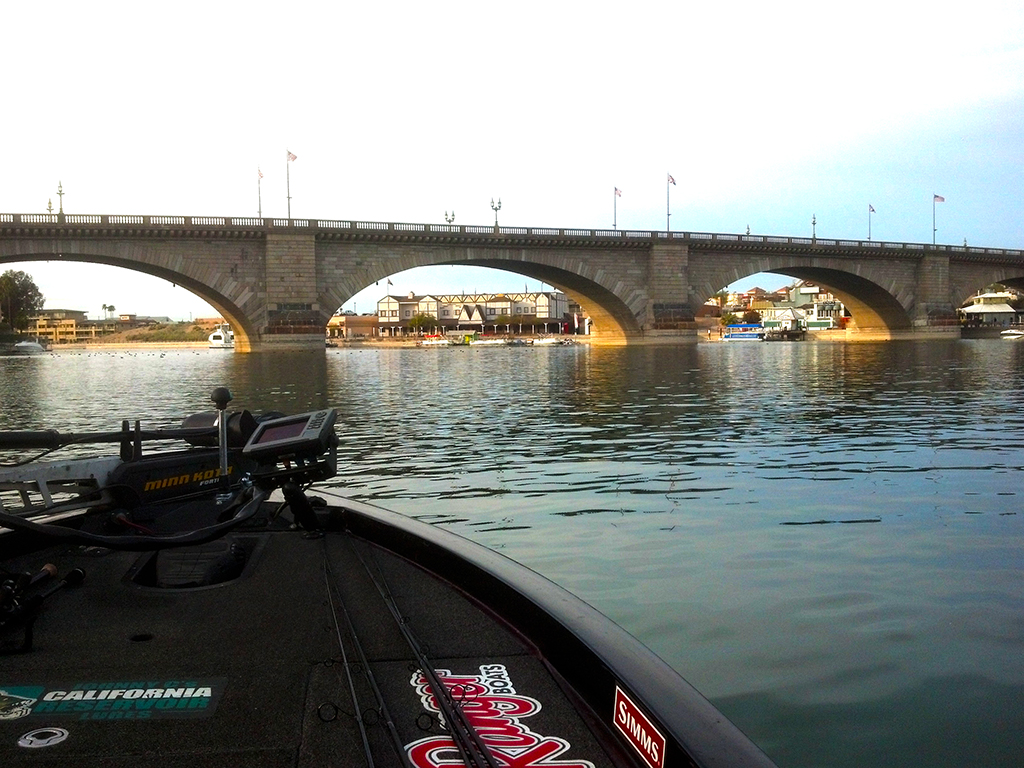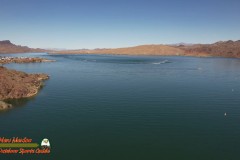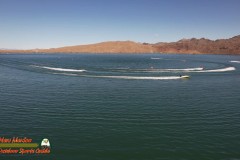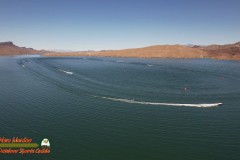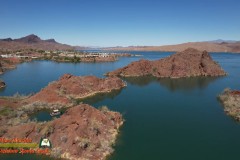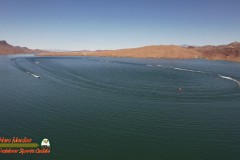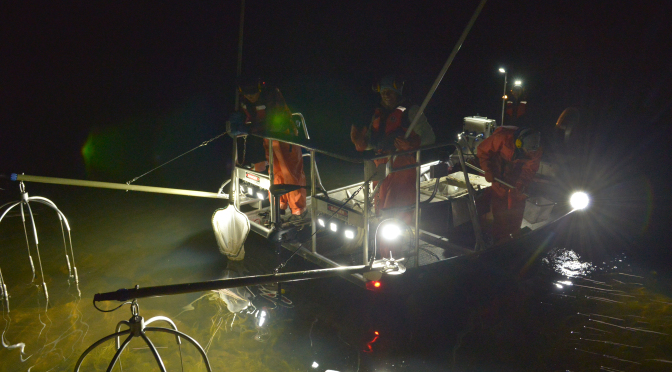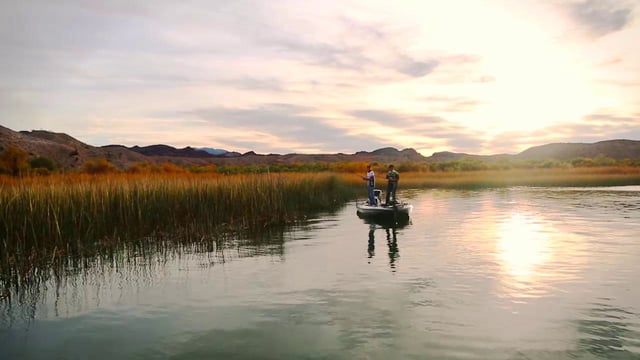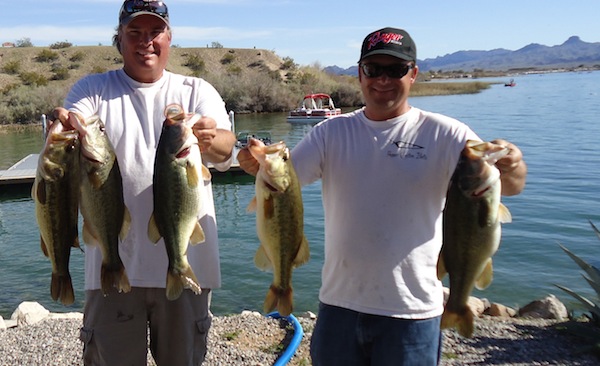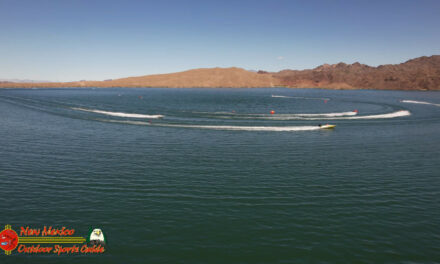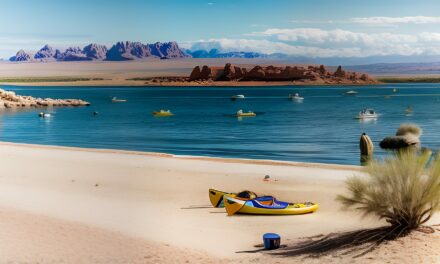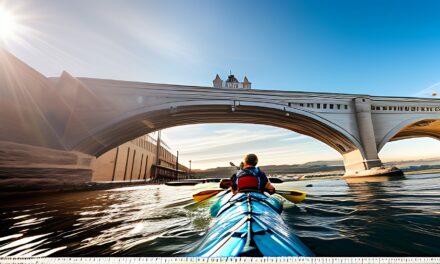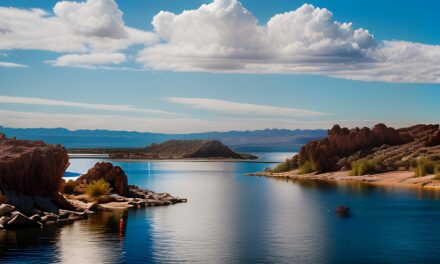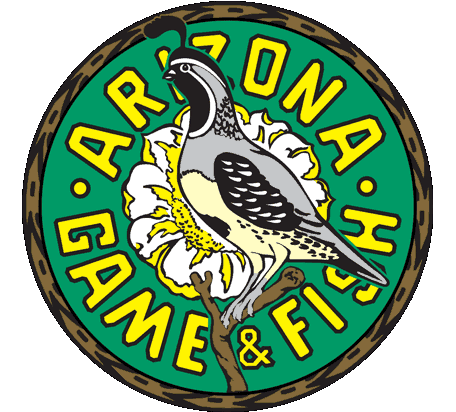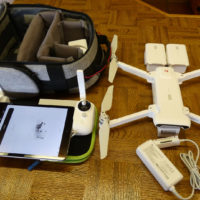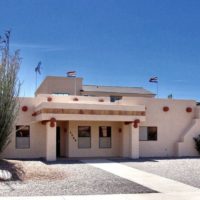Lake Level is 88.87 percent full with average temperature of 56 degrees. Lake Havasu is a 19,300-acre impoundment on the Colorado River, formed by Parker Dam. It is located along the Arizona-California border and is approximately twenty-five miles long, with a shoreline that extends more than one hundred miles. Lake Havasu is best known for its striped bass, largemouth bass and smallmouth bass fishing. It also has good fishing for channel catfish, flathead catfish, and sunfish, including some monster redear sunfish. There are also abundant carp and limited numbers of crappie.
Striper fishing has been challenging in recent years, with easy limits of small fish no longer the rule, as was the case five or six years ago. However, the average size of the striped bass caught has increased. Using live shad for bait is a good bet any time of the year. During the cooler months, stripers are usually found in deeper water, and fishing on the bottom or trolling with live shad or cut anchovies is a good bet. During the warmer months, fishing topwater lures that resemble shad near “boils” or where birds are actively feeding is your best bet for some exciting action.
The largemouth and smallmouth bass fishing has been steadily improving over the last several years. Tournament anglers are regularly weighing in bags of 5 fish that weigh over 20 pounds, and it is not uncommon to catch bass over 5 pounds and some even approaching 10 pounds. There are many different techniques used for largemouth bass. As a general rule, most people will use topwater lures such as buzzbaits or spinnerbaits in the early morning and then switch to jigs, crankbaits, or swimbaits as the day progresses. Using plastic baits that resemble worms, crawdads, frogs, or lizards often work well. It is generally best to fish around structure such as weedbeds, emergent vegetation, boat docks, or artificial habitat. Fishing picks up as the water temperatures warm up in the spring and summer but bucketmouths can be had any time of the year.
Smallmouth bass fishing has really improved in Lake Havasu the last few years, with a new Arizona state record for the Colorado River caught in late 2011 (5.63 pounds). For smallmouth bass it is usually best to fish rocky points, ridges, shorelines, or canyons. Most people use topwater lures, lipless crankbaits or jigs in the mornings and evenings. During the day try crankbaits, plastic worms or “creature” baits such as fake crawdads.
Redear sunfish have grown to trophy size in Lake Havasu, with a new state and world record being caught in 2011 (5.55 pounds). Redear sunfish in the 2-pound range and larger are regularly caught. Bluegill and redear can be caught around structure such as docks, vegetation, or artificial structure using mealworms, night crawlers, or small crappie jigs.
Channel catfish are widespread in the lake and can be caught using night crawlers, anchovies, chicken liver, stinkbait or about anything that “stinks”. For flathead catfish it is best to use live bait such as bluegill or small carp. Flathead catfish are relatively uncommon in the upper part of the lake, but much more abundant in the lower half, especially in the vicinity of the Bill Williams River arm of the reservoir. Catfish can be caught any time of the year but your best bet is at night during the summer.
Large carp are abundant in the lake and can provide some exciting fishing. Twenty to twenty-five pound carp are not uncommon. Most people use canned corn or dough balls.

